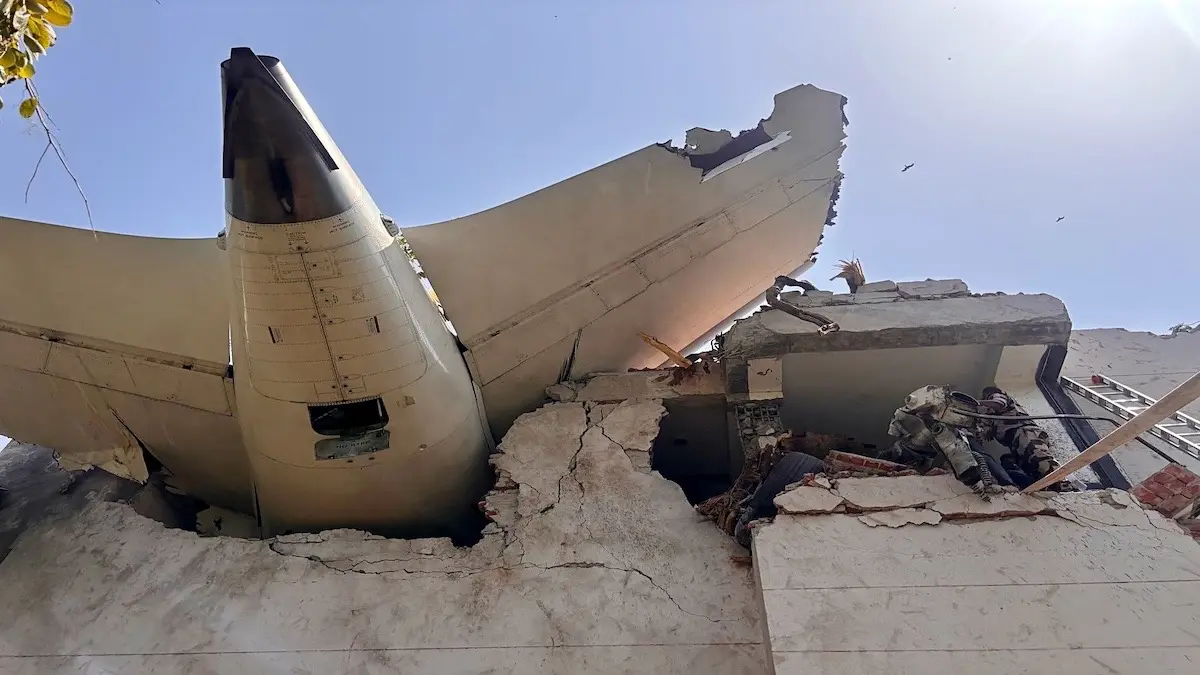Updated 18 June 2025 at 17:23 IST
Air India Crash: Did Boeing 787-8 Dreamliner Suffer Engine Failure At Takeoff? Could Tragedy Have Been Averted?
The deadly crash of an Air India Boeing 787-8 Dreamliner shortly after takeoff from Ahmedabad has raised serious questions about the aircraft’s engine performance. Investigators believe the plane’s emergency power system was activated, suggesting possible engine failure. As probes continue, experts are asking: could this tragic accident have been prevented?
- Republic Business
- 3 min read

The emergency power system on board the Air India Boeing 787-8 Dreamliner that crashed last week in Ahmedabad was likely active when the plane went down, according to a report by The Wall Street Journal citing people familiar with the investigation.
Investigators believe that the aircraft’s Ram Air Turbine (RAT) — a backup system that generates electricity and hydraulic pressure if both engines fail — had deployed. This raises serious questions about whether the Dreamliner’s engines functioned properly during takeoff.
The aircraft was fitted with GE Aerospace’s GEnx engines, though the engine manufacturer did not respond to Reuters' request for comment.
What Is RAT?
RAT stands for Ram Air Turbine — a small, foldable windmill-like device fitted on aircraft that acts as an emergency backup system. Here's how it works:
Advertisement
When is it used?
It deploys automatically if both engines fail or if the aircraft loses main power.
What does it do?
The RAT uses the airflow generated as the plane moves through the sky to spin its turbine, which in turn generates electricity and hydraulic pressure. This powers essential systems like flight controls, instruments, and communications, allowing the pilots to maintain control.
Advertisement
Why is it important?
It serves as a last line of defence when everything else fails, helping the pilots fly and land the plane safely, even in the worst-case scenarios.
CCTV Clip Key Evidence
The Dreamliner was en route to Gatwick Airport in the UK with 242 people on board when it began losing altitude just seconds after takeoff. It crashed into a medical college hostel near the airport, killing all but one passenger and at least 30 people on the ground, making it the deadliest aviation disaster in a decade.
India’s civil aviation ministry and Boeing have declined to comment, referring queries to the country’s Aircraft Accident Investigation Bureau.
A 59-second CCTV clip has emerged as key evidence. It shows the plane lifting off, followed by a rapid descent just 17 seconds later, with no visible signs of engine fire.
“It’s a tragic incident, and the whole world is watching,” said one Indian official involved in the probe.
What actions have been taken?
The Indian aviation regulator has requested pilot training records, maintenance logs, and dispatcher data from Air India. Preliminary checks of Air India’s 787 fleet showed no major safety concerns, but regulators did raise red flags over recent maintenance issues.
As part of the international probe, teams from the US NTSB, FAA, Boeing, and GE Aerospace have visited the crash site. Black boxes have been recovered and are under analysis.
Air India Chairman N. Chandrasekaran met Boeing’s Commercial Aeroplanes head Stephanie Pope this week. Addressing 700 staff in a town hall, he said, “We must use this tragedy as a turning point — to become a safer and stronger airline.”
Adding to the airline’s technical woes, another Air India 787 flight returned to Hong Kong on June 16 due to a technical issue shortly after takeoff.
Published By : Anubhav Maurya
Published On: 18 June 2025 at 17:23 IST
